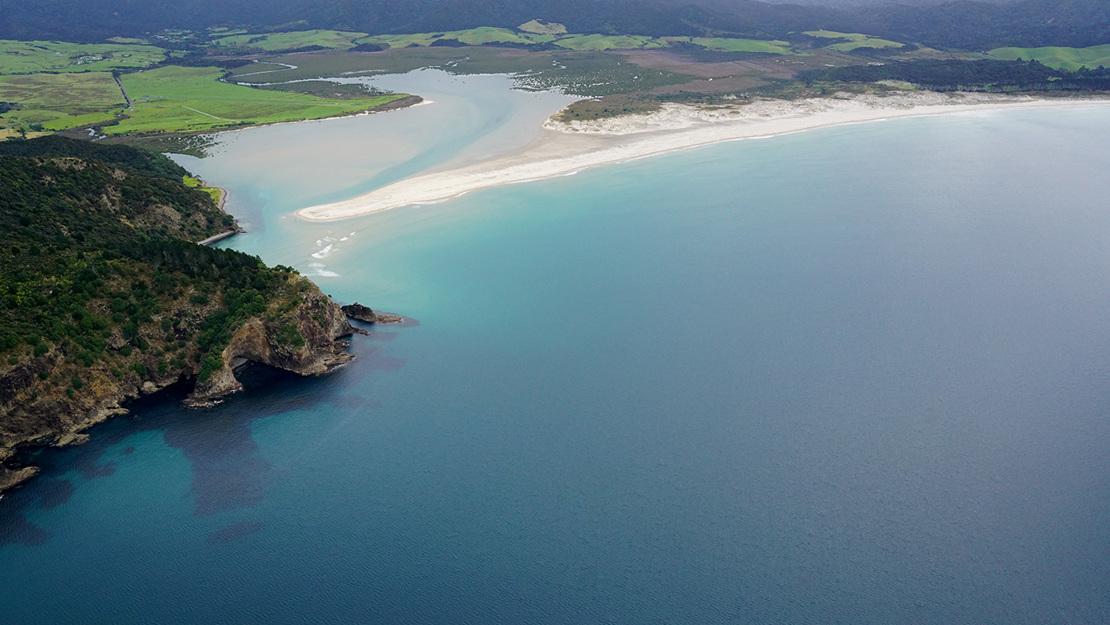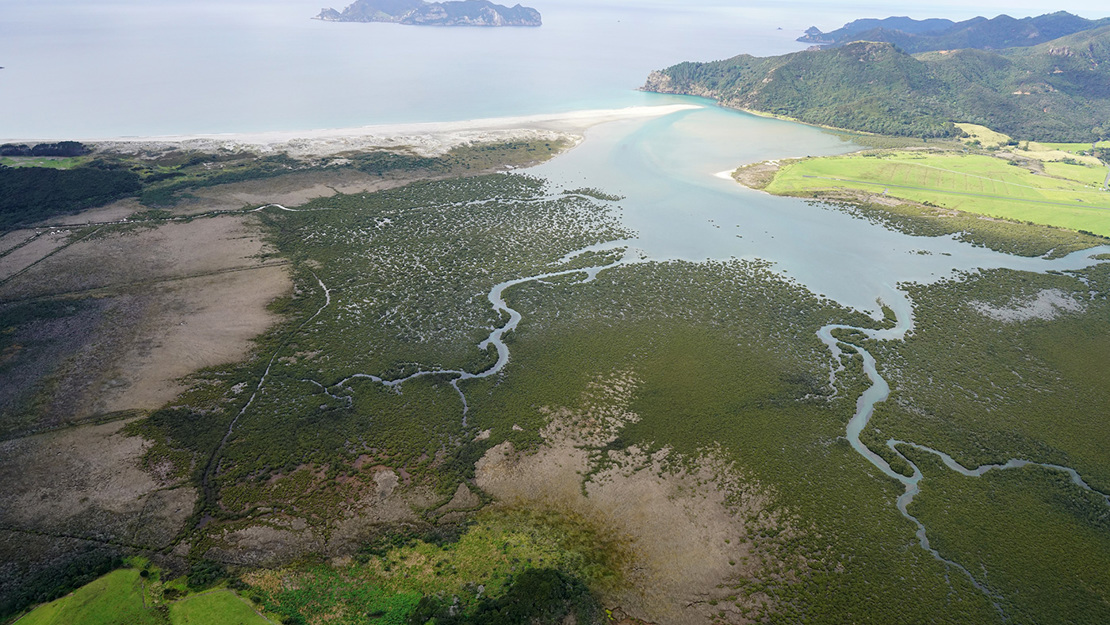Whangapoua
Whangapoua is one of Tāmaki Makaurau / Auckland’s largest estuarine ecosystems with mangroves, saltmarsh and salt-meadow grading into expansive freshwater wetlands. The intact sequence of ecosystems makes this area of high biodiversity value.
Size: 615 hectares
Site description
The Whangapoua biodiversity focus area is on the north-east coast of Aotea / Great Barrier Island. The biodiversity focus area encompasses Whangapoua estuary and beach, as well as native vegetation and streams which extend from the estuary up towards Okiwi.

Key ecosystems
This biodiversity focus area contains one of Tāmaki Makaurau / Auckland’s largest estuarine ecosystems with mangroves, saltmarsh, salt-meadow and shallow tidal flats (SA1). This is protected on the eastern side by a long sandspit and sandy beach with extensive sand dunes (DN2 and DN5).
Inland, the estuary transitions into large freshwater wetland mosaics (WL10, WL11, WL12, WL18, WL19). The healthy vegetation, with its rich species diversity and intact sequences from one ecosystem to another, is of extremely high biodiversity value.

Native fauna
The varied and extensive areas of habitat and abundance of food sources support a diverse range of native species. Wetland birds present include:
- mātātā (fernbird)
- mioweka (banded rail)
- pūweto (spotless crake)
- matuku hūrepo (Australasian bittern).
A diverse range of shorebird species utilise this area including:
- tūturiwhatu (New Zealand dotterel)
- tōrea pango (variable oystercatcher)
- pohowera (banded dotterel)
- kuaka (bar-tailed godwit).
Whangapoua estuary is the main strong-hold for pateke (brown teal) on Aotea / Great Barrier Island. There are also native lizard populations within this area.
The sequence and connections between streams, freshwater wetlands and the estuary provide an excellent freshwater habitat. Native fish found here include:
- giant kōkopu
- banded kōkopu
- inanga
- koaro.
Threats
Pest plants, rabbits and other animal pests threaten the integrity of the estuarine, wetland and dune vegetation and overall ecosystem health.



